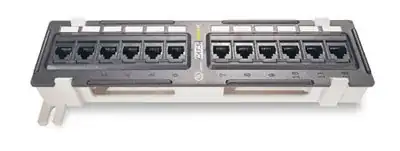I need to add a 24 port switch to my wiring closet. In the (distant) past, I usually just punched each port of the switch to a 110 block on the wall (using hand-made cables), and cross connect between that and the 110 block that has the runs to each workstation.
To save time, I'm thinking of buying 12 pre-made drop cables, cutting them in half (so 24 single ended cables), and punching those to my 110 block.
The things I'm worried about are wire type (ie. solid vs. strands) and color scheme.
I really don't know if they use different wire types (still?), but I remember that being an issue at one point. Can anyone comment on this? (I definitely won't feel comfortable trying to punch stranded wiring on my 110 block)
Also, picking up a random pre-built cable I had laying around, I noticed that the color scheme used didn't appear to be T568B, but T568A, which would clash with the rest of my wall.
Anyone know of an online source that specifies these things?
I've looked at www.cablesforless.com (which does have nicer prices) and www.cablestogo.com (which seem stupid expensive) so far. Cables For Less doesn't specify wiring scheme, Cables To Go does specify T568B. Both seem to specify stranded wires instead of solid.
Update [a little @dennis inspired ascii art]:
switch ]---> 110 punch block <---> 110 punch block <----> wall plate ]---[ computer
| | |
+-------------------------------------------------+ in |
| all mounted on wall in wiring closet | wall |
+-------------------------------------------------+
